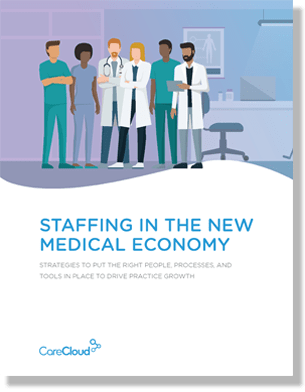Voice recognition software has existed in the medical environment since the 1980s, but recent updates to the technology have made it more useful than ever. Still, a remarkable number of practices are not utilizing it.
Though EHRs are dominating the healthcare IT headlines, there are a number of other systems available, like voice recognition software, that you can implement easily and use to make immediate, positive changes to your operations. This article is the last of a four-part series highlighting the technologies you should start using to improve your practice.
Lower Transcription Costs
A recent survey by Physicians Practice found that only 24.1% of independent medical practices and 21.1% of hospital-owned practices were currently using voice recognition technology. Considering the financial benefits dictation systems can reap, more offices should adopt them.
There have traditionally been two types of voice recognition systems. In both formats, review of the digital transcription is always necessary. The technology is not perfect, so errors tend to make up 2-10% of each recording.
With computer-based “interactive” dictation, a physician dictates a report to a PC or laptop and “signs off” on her completed report once finished. This can be completed very quickly, directly following a patient visit.
By requiring the physician to immediately review and correct errors in her report before signing off, interactive dictation eliminates the medical transcriptionist from the process, lowering overhead costs.
The other voice recognition option is for doctors to perform “blind dictation” into recording devices right after patient visits and download the transcripts of the recordings to a PC at a later time.
A medical transcriptionist (MT) usually performs the download, review, and edit of the “blind” transcripts. By listening to the original audio while reading along with the downloaded transcripts, the MT can notice and correct the software’s mistakes.
Blind dictation has proven financially beneficial to many practices, as well. Practice managers report that it’s more efficient to have MTs find and correct errors than just transcribe dictation. For most, it also results in more accurate transcriptions being turned around more quickly.
If you’re still transcribing the old-fashioned way, you may find that implementing voice recognition software lessens your need to have multiple MTs on staff or to outsource to a transcription service.
Lastly, getting comfortable with digital transcription now can help you make the EHR transition more smoothly later. Most EHR templates are designed to integrate with voice recognition software.
In Conclusion: ‘Other’ Tech Investments Reap Bottom Line Benefits
36.6% of independent and 29.3% of hospital-owned practices reported to Physicians Practice that due to the economic impact of the recession, they’re putting off the purchase of new technologies.
Budget concerns are always a factor in practice management decisions, especially for major purchases like technology investments. But all of the technologies discussed over the past few weeks – new appointment systems, waiting room kiosks, patient portals, and digital voice recognition – have the potential to show return on investment within just a couple of years, if not sooner.
If properly implemented and, to borrow a term from all that EHR news, “meaningfully used,” these other technological systems can save time, maximize returns and help update your practice for the twenty-first century.
What non-EHR technology systems have you recently deployed in your office?




